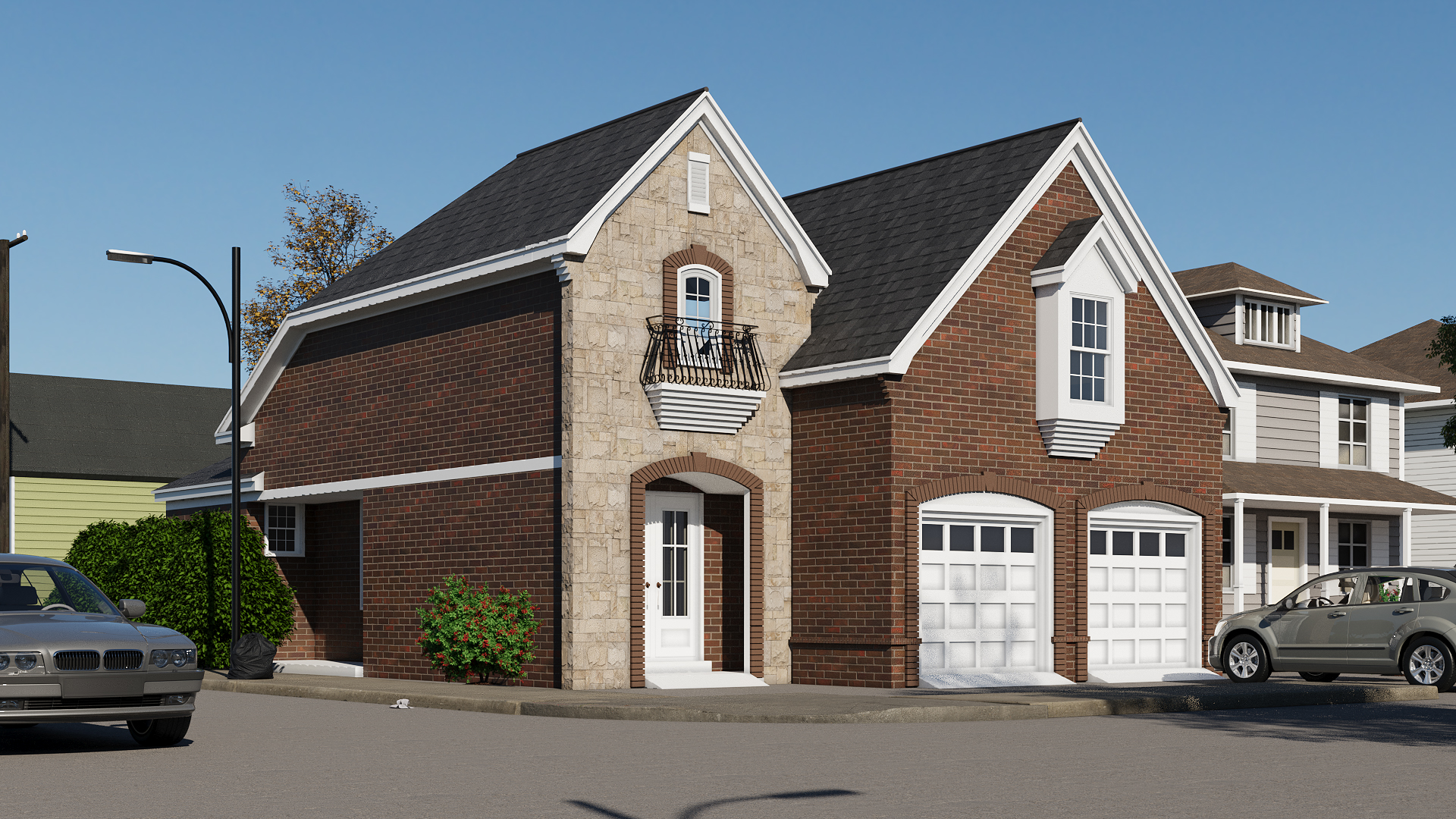
Smart Goals for Architects and Designers: How to Set Them to Maximize Your Business Success
Setting clear and actionable goals is a fundamental practice for any professional looking to grow their business and achieve long-term success. Architects and designers, who often juggle creative vision with practical implementation, can greatly benefit from establishing SMART goals, goals that are Specific, Measurable, Achievable, Relevant, and Time–bound.
In this blog post, we’ll delve deep into the process of setting SMART goals specifically for architects and designers. You’ll learn how to create goals that maximize your business success, lead to personal development, and improve overall performance, all while staying aligned with the fast-paced and ever-evolving world of architecture and design.
INTRODUCTION TO SMART GOALS
The concept of SMART goals has been around since the 1980s, with its roots in the world of business and project management. However, it’s equally applicable for architects and designers who aim to enhance their creativity, improve client relationships, meet project deadlines, or increase profitability.
SMART goals provide a structured framework that helps professionals define their objectives clearly and stay focused on achieving them within a specified time frame. Let’s break down the SMART acronym:
- Specific: A goal should be clear, precise, and unambiguous. It needs to target a specific area of improvement or focus.
- Measurable: The goal should have criteria for tracking progress and determining when it has been achieved.
- Achievable: The goal should be realistic, attainable, and within reach, considering the resources and time available.
- Relevant: The goal should be aligned with your broader professional objectives, business vision, or personal growth.
- Time-bound: The goal should have a specific deadline or timeframe within which it must be accomplished.
By following this framework, architects and designers can set clear objectives that lead to success rather than vague intentions that are harder to track and execute.
WHY SMART GOALS MATTER IN ARCHITECTURE AND DESIGN
In the world of architecture and design, projects can be complex, often involving multiple stakeholders, timelines, and layers of creativity and technical detail. This complexity makes it even more critical for architects and designers to set goals that bring structure and direction to their work. SMART goals provide clarity, motivation, and a roadmap to success in the following ways:
- Provides Focus: With clearly defined objectives, architects can maintain focus and direct their efforts toward achieving specific project outcomes, whether it’s finishing a design or completing a client proposal.
- Increases Accountability: SMART goals create a sense of responsibility. When goals are measurable and time-bound, individuals or teams can be held accountable for their progress or lack thereof.
- Boosts Motivation: Goals that are clear and achievable provide a sense of purpose and motivation, pushing professionals to work consistently towards their targets.
- Improves Time Management: Architects and designers can better prioritize tasks and manage their time effectively when they know what they are working towards and how long they have to accomplish it.
Supports Career Growth: By setting long-term and short-term SMART goals, designers and architects can improve their skill sets, pursue certifications, or expand their client base, ultimately advancing their careers.

HOW TO SET SPECIFIC SMART GOALS FOR ARCHITECTURE AND DESIGNERS
When setting SMART goals, it’s important to be as specific as possible. Avoid vague or generic goals like “improve my business” or “finish a design project.” Instead, drill down to the core of what you want to accomplish. For example:
- Vague goal: “Get more clients.”
- SMART goal: “Increase the number of residential design clients by 15% in the next six months by launching a new marketing campaign.”
A specific goal answers the what, why, who, where, and when questions. Let’s go deeper into how to craft specific goals for architects and designers.
Example 1: Improve Design Skills
- Specific: Attend a 3D visualization course to enhance rendering skills.
- Why: To improve the quality of architectural visualizations and increase client satisfaction.
- Who: Myself and one junior designer in the firm.
- Where: An online course from a reputable provider.
- When: Within the next three months.
This level of detail in your goal-setting makes it clear what action steps you need to take and why they are important.
Example 2: Complete a Complex Project
- Specific: Finalize the design for a commercial office building by collaborating with the structural engineer and interior design team.
- Why: To ensure the project stays on schedule and meets the client’s expectations.
- Who: Myself, the engineering team, and the interior design consultant.
- Where: Weekly meetings with all stakeholders.
- When: By the end of the quarter.
The more specific you are in setting goals, the easier it becomes to follow through with actionable steps and track progress.
MAKING YOUR GOALS MEASURABLE
A measurable goal includes clear indicators of success. This can be expressed in terms of percentages, numbers, deadlines, or other quantifiable benchmarks. A measurable goal helps you answer questions like, “How will I know I’ve achieved this goal?” or “What metrics will I use to track progress?”
Example 1: Boost Firm Revenue
- Measurable: Increase the architecture firm’s revenue by 25% over the next 12 months.
This goal is measurable because the 25% increase gives you a clear target. You can track monthly revenue, assess performance, and adjust strategies accordingly.
Example 2: Improve Client Satisfaction
- Measurable: Increase the firm’s client satisfaction score to 90% by the end of the year, as measured by client surveys.
Here, the measurable part of the goal is the 90% satisfaction score. Regular feedback from clients through surveys will help you track progress toward this goal.
Example 3: Expand Portfolio with Sustainable Designs
- Measurable: Add five new sustainable design projects to the portfolio within the next six months.
This measurable goal provides a clear number (five projects), allowing you to track how many projects you’ve completed and how many more are needed.
ENSURING GOALS ARE ACHIEVABLE
Setting lofty goals is great, but they need to be realistic and within reach. If a goal is too ambitious, it can be discouraging when you fail to achieve it. To make goals achievable, you need to take into account your current resources, time, and expertise.
Example 1: Gain a New Skill
- Achievable: Complete a 10-week course on sustainable architecture practices to be able to apply these concepts to client projects.
This goal is achievable because a 10-week course is a manageable time commitment, and it fits within the designer’s existing schedule.
Example 2: Secure New Commercial Projects
- Achievable: Secure two new commercial design projects within the next six months by leveraging local business networks and attending industry conferences.
This goal is attainable for someone who has an established network and the capacity to take on new projects, but it pushes the professional to be proactive in building client relationships.
Setting achievable goals prevents burnout and fosters a sense of progress, helping architects and designers stay motivated.
THE RELEVANCE OF GOALS TO YOUR BUSINESS VISION
When setting goals, it’s essential that they align with your broader business objectives. Relevance ensures that the effort you put into achieving a goal directly contributes to your long-term vision. Ask yourself how each goal ties into your overarching career plans or business development strategy.
Example 1: Increase Sustainable Practices
If your architectural firm aims to become a leader in green building design, a relevant goal would be:
- Relevant: Complete LEED certification training within the next year to offer sustainable design services to environmentally conscious clients.
This goal aligns with the broader business objective of positioning the firm as a leader in sustainability.
Example 2: Diversify Services
If your firm wants to expand into new markets, a relevant goal would be:
- Relevant: Launch a marketing campaign targeting commercial property developers in the next quarter to diversify the firm’s client base.
Here, the marketing goal is directly tied to the firm’s objective of expanding into new markets and growing its client base.
SETTING TIME BOUND GOALS
Time-bound goals ensure that there is a deadline or timeframe for completion. This helps create urgency and motivates you to take action.
Example 1: Complete Project Design
- Time-bound: Finalize all design concepts for the residential housing project by March 30, 2024, so construction can begin in April.
The time-bound aspect is the deadline of March 30, which helps keep the project on schedule.
Example 2: Enhance Marketing Strategy
- Time-bound: Develop a new digital marketing strategy for the architecture firm within the next two months, with implementation starting in the third month.
The two-month timeframe for developing the strategy ensures that progress is made within a specific period, helping to avoid procrastination.

EXAMPLES OF SMART GOALS FOR ARCHITECT AND DESIGNERS
To further illustrate how to set SMART goals, let’s look at some examples tailored for architects and designers.
Example 1: Expanding Business Reach
- Specific: Open a new office in a neighboring city to expand the firm’s client base.
- Measurable: Achieve 10 new clients within the first year of operation.
- Achievable: The firm has the financial and human resources to support the new office.
- Relevant: Expanding into a new city aligns with the firm’s goal of increasing market share.
- Time-bound: The office will be opened by December 2024.
Example 2: Improving Client Retention
- Specific: Increase client retention by improving communication and project transparency.
- Measurable: Boost client retention rate by 15% over the next year.
- Achievable: Implement new project management software to track client interactions.
- Relevant: Improving client retention supports the firm’s long-term sustainability.
Time-bound: Implement changes within the next six months.
TRACKING AND EVALUATING YOUR SMART GOALS
Once you’ve set your SMART goals, the next step is to track progress and evaluate your performance. Here’s how to stay on top of your goals:
- Use a Project Management Tool: Tools like Trello, Asana, or Monday.com allow you to organize tasks, set deadlines, and monitor progress in real-time.
- Create Milestones: Break down your goals into smaller, manageable milestones. For example, if your goal is to increase clients by 20% in one year, set a quarterly milestone to track your progress toward that figure.
- Regular Check-Ins: Schedule regular check-ins with your team (or yourself) to assess how well you’re meeting your SMART goals. Are you on track, or do you need to adjust your approach?
- Celebrate Successes: When you achieve a goal or reach a milestone, celebrate it! Recognizing progress boosts morale and keeps you motivated.
- Adjust When Necessary: Sometimes, external factors (like market shifts or unexpected delays) can affect your goals. Be flexible and willing to adjust your goals as needed while staying aligned with your long-term objectives.
CONCLUSION
For architects and designers, setting SMART goals is an essential part of maximizing business success. It’s not just about having a vision; it’s about breaking that vision down into actionable steps that you can track, manage, and achieve. Whether you’re looking to expand your client base, complete a large-scale project, or hone your creative skills, SMART goals provide the roadmap to get there.
By incorporating the principles of being specific, measurable, achievable, relevant, and time-bound, you’ll be able to tackle even the most ambitious goals with confidence. Regularly tracking your progress, adjusting where needed, and staying motivated will ensure that you continue to grow professionally and achieve sustained success in the competitive fields of architecture and design.


